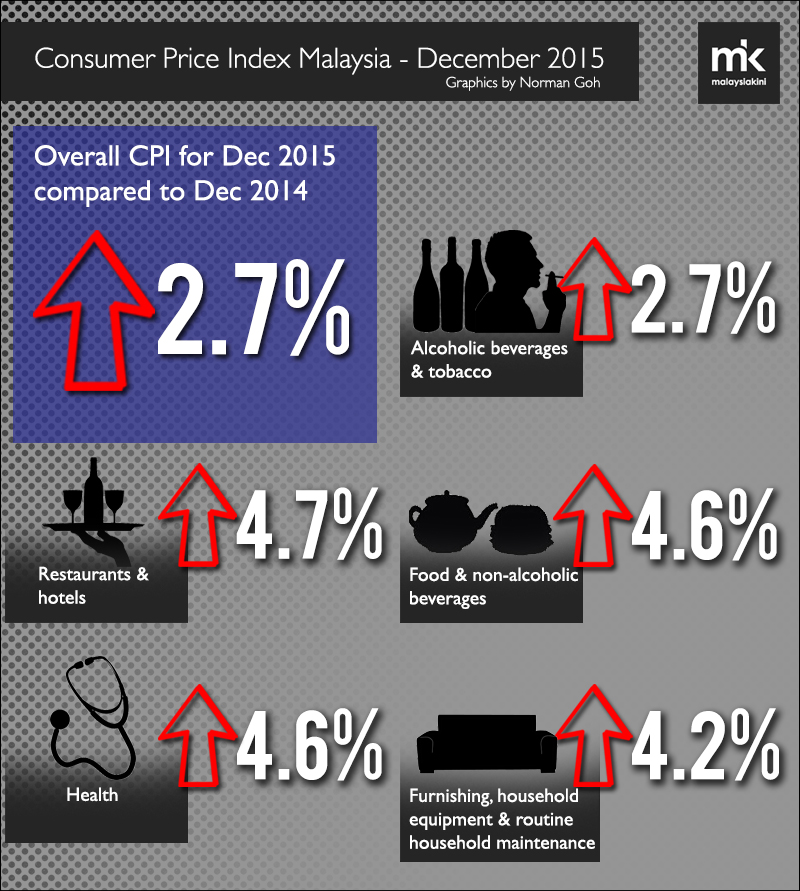Your pocket is shrinking, and official statistics can prove that it is not just your imagination.
According to the Consumer Price Index (CPI) released today, prices went up 2.7 percent in December 2015, compared with the same month the year before.
The cost of food and non-alcoholic beverages went up by 4.6 percent on a year-on-year basis in December 2015.
Health also cost 4.6 percent more in December 2015, year-on-year, while household maintenance was up by 4.2 percent compared with 2015, data released by the Statistics Department shows.
However, the CPI remained the same in December 2015, compared with the month before, with rises of less than two percent in various categories, including health and education.

The CPI is calculated based on the prices of a selected basket of basic goods.
However, economists generally agree that the CPI understates the real needs of consumers, who consume goods and services beyond the basket of goods selected.
According to the Statistics Department, meat and vegetables were significantly more expensive in December 2015 as compared to the month before.
Notable increases were for:
- Spinach: 17.6 percent;
- Choy sum: 12.8 percent;
- Watermelon: 9.4 percent;
- Chicken: 6 percent;
- Potatoes: 3.6 percent;
- Tomatoes: 3.1 percent;
- Longtail tuna fish: 2.6 percent;
- Hardtail scad fish: 2.6 percent;
- Cucumber: 2.2 percent;
- Black pomfret fish: 2.0 percent;
- Dried chilli: 1.9 percent;
- Indian mackerel fish: 1.2 percent; and
- Beef: 0.3 percent.
Over 2015, the cost of preparing food at home went up 3.6 percent, while it was four percent more expensive to eat out by the end of the year compared to at the start of 2015.
“Among the subgroups of 'Food At Home' which showed crucial increases during this period were vegetables (+7.3 percent); milk and eggs (+4.6 percent); fish and seafood (+4.3 percent); and fruits (+4.1 percent),” it said.

